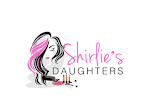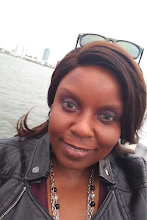The right scent can be as perfect an accessory as a hot new purse. It can also inspire a burst of confidence in you—just one of the benefits of wearing a good perfume.
Other scent effects are deeper, hitting us at emotional and neurological levels. Our sense of smell is strong and neurologically linked to both taste and memory; so our favorite fragrances can be uplifting or calming, reminding us of bright days or wild nights—depending on their ranges and notes.
Physiologically, inhaling a fragrance stimulates the part of your brain where taste is analyzed and emotional memories are stored; it also connects to the areas that deal with heart rate, blood pressure, breathing, stress levels, and hormone balance. Of the five senses, only our sense of smell is linked directly to our “emotional control center” part of the brain—the same place where fear, anxiety, depression, anger, and joy resonate from.
There is a whole arm of fragrance that uses scented oils and extracts for medicinal (physical or mental) purposes, to soothe and heal, relax and inspire; different essential oils claim to enhance everything from emotional state to physical lifespan. Scents have been used for centuries for ritualistic purposes, to reduce stress and emotional trauma, increase energy, inspire moods, or stimulate hormone production.
Today, science is looking more and more into how and why certain fragrances make us feel the way they do. Researchers at the Universities of Vienna and Berlin recently found that a specific chemical in sandalwood and frankincense can increase the brain’s oxygen levels by as much as 20 percent! This burst can essentially improve the functioning of the immune system, as well as improve learning and attitude, hormone balance, and energy levels.
Find out how some common fragrance notes can help affect or improve your moods.
Stress
- Try: Bergamot, Clary Sage, Frankincense, Grapefruit, Jasmine, Lavender, Mandarin, Neroli, Patchouli, Chamomile, Rose, Sandalwood, Vetiver, Ylang Ylang
- Recommended perfumes for women include: Opium by Yves Saint Laurent, Safari by Ralph Lauren, Nude by Bill Blass, Ellen Tracy by Ellen Tracy, and Je Reviens by Worth
- Recommended colognes for men include: Light Blue by Dolce & Gabbana, Aramis by Aramis, Chaps by Ralph Lauren, Curve by Liz Claiborne, and Monsieur Musk by Dana
Shirlie recommends: Women Rare Gold, Imari Amor
Memory and Concentration
- Try: Basil, Black Pepper, Cypress, Lemon, Peppermint, Rosemary
- Recommended perfumes for women include: Basil and Mandarin by Jo Malone, Ange ou Demon Le Secret by Givenchy, Diorella by Dior
- Unisex Fragrances include: Royal Water by Creed, Grapefruit by Jo Malone, and Eau de Sud by Annick Goutal
- Recommended colognes for men include: Cool Water by Davidoff, Booster by Lacoste, Masculine by Dolce and Gabbana
Libido
- Try: Lavender, Pumpkin, Civet, Vanilla, Musk
- Recommended perfumes for women include: Spark by Liz Claiborne, Dolce & Gabbana by Dolce & Gabbana, Brit by Burberry, Hanae Mori by Hanae Mori, and Pink Sugar by Aquolina
- Recommended colognes for men include: Canoe by Dana, Pierre Cardin by Pierre Cardin
Fear
- Try: Bergamot, Cedarwood, Clary Sage, Frankincense, Grapefruit, Jasmine, Lemon, Neroli, Orange, Chamomile, Sandalwood, Vetiver
- Recommended perfumes for women include: Chanel No. 5 by Chanel, Burberry by Burberry, Ellen Tracy by Ellen Tracy, and Shalimar by Guerlain
- Recommended colognes for men include: Armani Code by Giorgio Armani, Lagerfeld by Karl Lagerfeld, Lucky Number 6 by Liz Claiborne, L’eau de Issey by Issey Miyake
Depression
- Try: Bergamot, Clary Sage, Frankincense, Geranium, Grapefruit, Jasmine, Lavender, Lemon, Mandarin, Neroli, Orange, Chamomile, Rose, Sandalwood, Ylang Ylang
- Recommended perfumes for women include: Light Blue by Dolce and Gabanna, Design by Paul Sebastian, Mackie by Bob Mackie, Casual by Paul Sebastian, and Halston by Halston
- Recommended colognes for men include: Grey Flannel by Geoffrey Beene, Royal Copenhagen by Royal Copenhagen
Women's Rare Platinum
- Try: Cypress, Frankincense, Helichrysum, Neroli, Rose, Sandalwood, Vetiver
- Recommended perfumes for women include: Parisienne by Yves Saint Laurent, Red by Giorgio Beverly Hills, Volupte by Oscar de la Renta
- Recommended colognes for men include: 212 by Carolina Herrera, Acqua di Gio pour Homme by Giorgio Armani, and Jil Sander Man.
To find the right scents for other emotions like fatigue and loneliness, see Perfume.com.
By Jessica Linnay for Perfume.com

.png)




Comments
Post a Comment